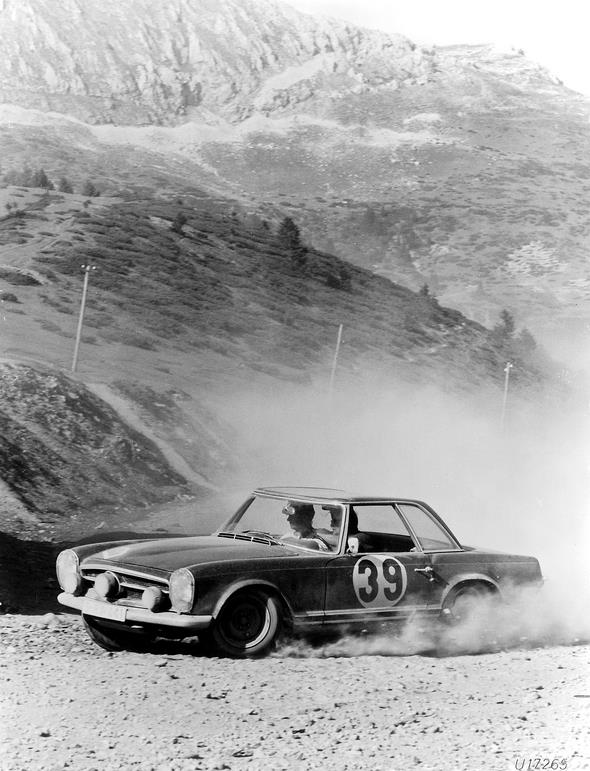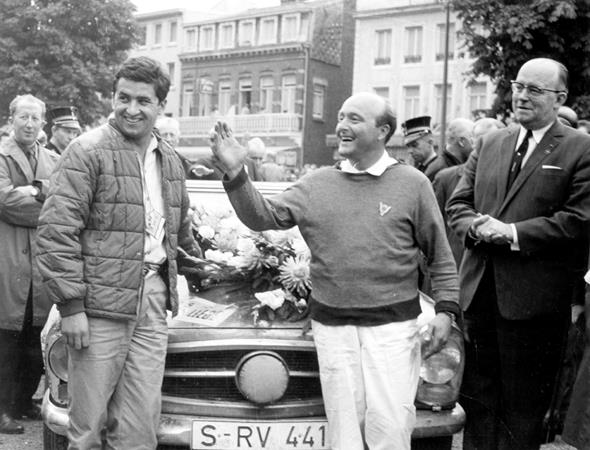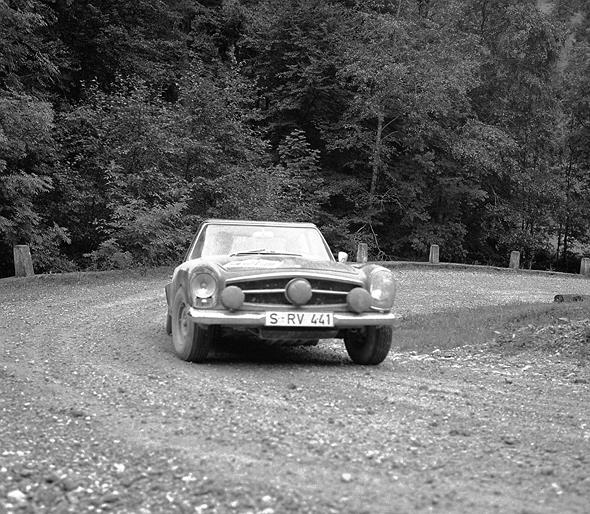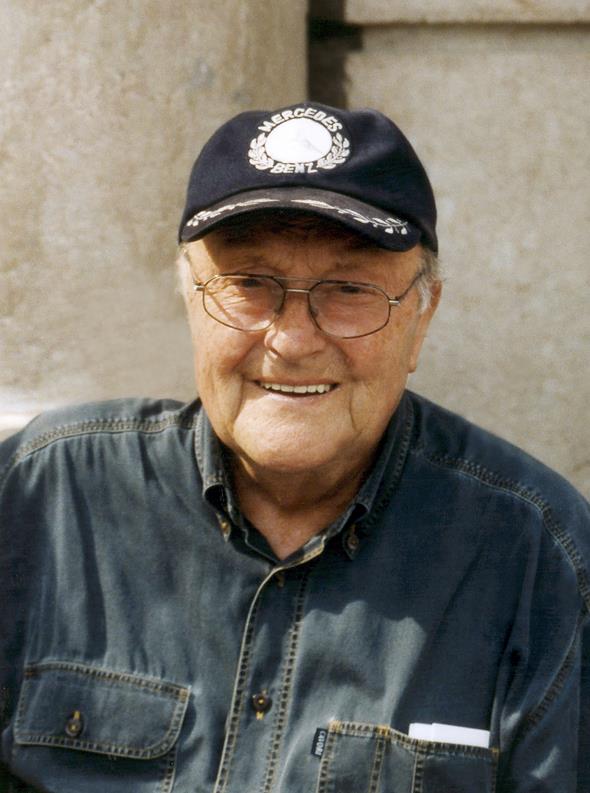

- Second overall victory in succession for Mercedes-Benz at the 90-hour rally
- The then new SL model series W 113 impressively displayed its sporting credentials
Stuttgart – From Belgium to Bulgaria and back, 5,500 kilometres in 90 hours: from 27 to 31 August 1963, Eugen Böhringer drove the red Mercedes-Benz 230 SL (W 113) day and night, hurtling through narrow passes and along distant motorways.
Together with co-driver Klaus Kaiser, he secured overall victory in the ‘Marathon de la Route’, the renowned Belgian long-distance rally. Böhringer had already won the ‘Liège–Sofia–Liège’ event in 1962, the year in which he became European Rally Champion, driving a Mercedes-Benz 220 SE (W 111) with Hermann Eger as his co-driver.
In 1963, Böhringer lined up in a brand new car: the Mercedes-Benz 230 SL, nicknamed ‘Pagoda’ because of its dome-shaped hardtop and the successor to the 190 SL (W 121) and 300 SL (W 198) models. The elegant Roadster, which was the first ever sports car to feature a safety body, took part in the ‘Marathon de la Route’ to display its racing capability.
Böhringer’s SL with starting number 39 was based on a pre-production vehicle. It featured the typical rally modifications of the era, such as reinforced suspension and larger tanks. The rally car also had a hardtop rigidly attached to its body. Thanks to its larger displacement (2.6 as opposed to 2.3 litres), the engine produced about 20 hp (15 kW) more power than its series-production counterpart.

This meant that there was around 170 hp (125 kW) on tap as well as more torque. Led by Erich Waxenberger, the Mercedes-Benz test department prepared the 230 SL for rally use. Following its race victory, the car, still showing all the traces of its participation in the rally, was displayed at the Frankfurt International Motor Show in the autumn of 1963 for the official German premiere of the W 113 on the Mercedes-Benz stand.
The motor sport community still found it hard to gauge the new Roadster’s chances. On 6 September 1963, the British magazine ‘Autosport’ wrote: “As last year’s winner, Eugen Böhringer started among the favourites for the 1963 Marathon de la Route, but the fact that he was driving a new car, as yet untried in competition, did not particularly encourage his supporters.”

But Böhringer, a hotelier born in 1922, proved his doubters wrong. Starting in Spa, the route took in the Saarland, Baden-Württemberg and Bavaria before moving on to Austria, Italy, and Yugoslavia. Then there was a slight detour to Romania followed by a short stop in Sofia, before heading back to Yugoslavia and Italy again, where the toughest Alpine passes awaited the rally contestants.
On the way back, Böhringer had a minor accident in Dubrovnik, but this only cost him two minutes. “Eugen Böhringer slightly reshaped the beautiful 230 SL but pressed on,” wrote ‘Autocar’ in its report of the minor mishap. Racing towards Rovereto, Böhringer and Kaiser were close behind Rauno Aaltonen and Tony Ambrose in an Austin-Healey.
On the Vivione Pass, the car driven by Aaltonen and Ambrose left the road, allowing Böhringer to take the lead in the 230 SL – a position which he held until the finish line in Belgium.
It was a tough competition. “Whereas the official line was that it would be a leisurely parade-type affair, the participants were working to a revised schedule,” wrote German magazine ‘auto motor und sport’ in its 1982 portrait of Böhringer and the customs of the ‘Marathon de la Route’.

This is borne out by the statistics: 129 vehicles started the event in 1963, but only 20 of them finished it, making the victory achieved by Eugen Böhringer and Klaus Kaiser all the more impressive, as they reached Liège with only 8 minutes of penalties. After the rally, British magazine ‘Autocar’ wrote: “The Royal Motor Union of Liège set a murderous pace for their classic event and Böhringer’s fabulous performance shook them rigid.”
“His competitors feared him because he always took it right to the limit, always risked everything, asking absolutely everything of himself and of Klaus Kaiser and of the Mercedes-Benz 230 SL which they drove in the rally,” wrote the magazine ‘Kristall’ in its autumn 1964 report about Böhringer and the ‘Marathon de la Route’.
Asked about the dangers of the rally by an interviewer, Böhringer replied that 80 per cent of fast driving on public roads was an “easily calculable risk”. Kristall’s chief reporter Rolf Winter then responded by asking about the other 20 per cent. “Oh, well! depends on the circumstances,” replied the Mercedes-Benz works racing driver in his Swabian dialect.

Eugen Böhringer, who died in June 2013, will always be remembered as a two-time winner of the ‘Marathon de la Route’. In fact, the hotelier from Stuttgart almost achieved three wins in succession, but he only finished third in the last staging of the rally in 1964. Nevertheless, the organisers honoured him in 1964 with a special trophy for two victories and two excellent placings in four consecutive years.





